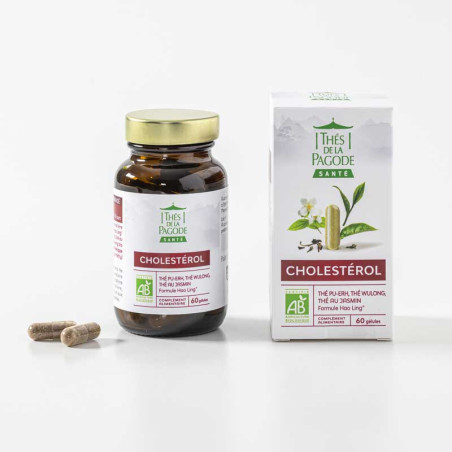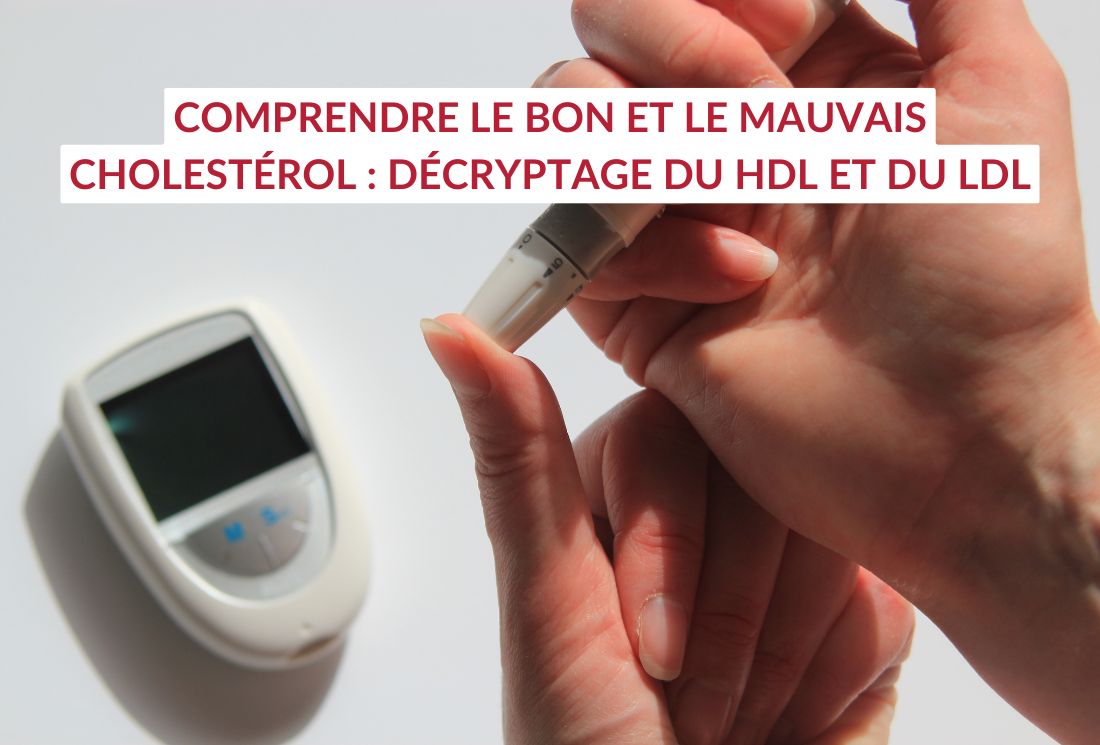Le thé Hao Ling diminue l’accumulation lipidique dans des cultures primaires d’hépatocytes de rat

Voici les résultats d’une étude d’évaluation des effets hypolipidémiants du thé Pu-erh qui constitue 60% de notre thé Hao Ling qui aide à réguler le cholestérol.
Thé pu-erh pour aider à réguler le cholestérol
Introduction
Le thé est une des boissons les plus consommées à travers le monde et ses effets bénéfiques pour la santé ont été largement étudiés. Depuis ces dernières années, les effets hypolipidémiants du thé Pu-erh ont suscité un intérêt croissant.
L’importance du foie dans le métabolisme des lipides nous a incité à étudier les propriétés hypolipidémiantes du thé Pu-erh en culture primaire d’hépatocytes de rats. Nous avons testé le potentiel effet hypolipémiant d’un extrait de thé Pu-erh Hao Ling (HLPT) au niveau cellulaire et moléculaire.
Gélules anti cholesterol bio pour aider à réduire le cholestérol et maintenir un taux de cholestérol et de triglycérides sains

Complément alimentaire cholestérol
Gélules anti cholesterol bio pour aider à réduire le cholestérol et maintenir un taux de cholestérol et de triglycérides sains
Conclusion
Le but de cette étude était d’évaluer les effets du thé Hao Ling sur l’accumulation de lipides au niveau cellulaire et moléculaire dans des cultures d’hépatocytes primaires de rat.
Nos résultats ont permis de mettre en évidence que le thé Hao Ling entrainait une diminution significative de l’accumulation lipidique dans les hépatocytes de rat, et ce, de manière plus importante qu’EGCG, molécule hypolipémiante, principale catéchine de l’extrait. Nous avons ensuite étudié l’impact du thé Hao Ling sur le métabolisme lipidique. HPLT réduit l’expression du gène Srebp1c suggérant une diminution de la lipogenèse hépatique. EGCG entraine une augmentation de l’expression du gène Cyp7a1, enzyme responsable de l’excrétion biliaire. Il est intéressant de noter que l’extrait de thé n’a pas induit une augmentation de l’expression Cyp7a1.
Ces résultats montrent que le thé Hao Ling réduit plus fortement l’accumulation des lipides qu’EGCG. En outre, le thé Hao Ling et EGCG modulent différemment le métabolisme des lipides. Ceci suggère que d’autres composés du thé agissent sur l’accumulation des lipides et le métabolisme. De plus amples études sont nécessaires pour étudier si d’autres composés interagissent pour réduire et moduler l’accumulation de lipides dans la culture primaire d’hépatocytes de rats.
Hao Ling pu-erh tea attenuates lipid accumulation in primary culture rat hepatocytes.
Aim: Tea is one of the most consumed beverages in the world and its healthpromoting effects have been widely investigated. Lipid-lowering effects of pu-erh tea have attracted growing interest. The importance of liver in lipid metabolism prompted us to investigate the lipid-lowering properties of pu-erh tea in rat primary culture hepatocytes. We tested the effect of a Hao Ling pu-erh tea extract (HLPT) and one of the major components of tea as Epigallocatechin-3-gallate (EGCG) which is largely recognized as a hypolipidemic molecule.
Methods: HLPT: an infusion of Hao Ling pu-erh tea was lyophilized and quantified for its composition in catechins by LC-MS. 24h after seeding on collagen, rat hepatocytes in primary culture were treated for 24h with various concentrations of LPT (100,200,400,600 μg/ml) and EGCG (30,100 uM) and compared to CyclosporinA (hyperlipidemic reference) and Clofibrate (hypolipidemic drug used in human) (n=3 in triplicate). Lipid droplet accumulation was measured by LipidTox staining and evaluated by fluorescence microscopy on an ArrayScanXTI high Content Analysis Reader (Cellomics Inc.).
Results: We found that HLPT significantly prevented hepatocyte lipid accumulation (-56%) and in the same proportion to Clofibrate.EGCG also significantly attenuated lipid accumulation (-19%) but less than HLPT.
Conclusion: The main result of this study was to point out the major implication of liver cells in the hypolipidemic effects of HLPT.Moreover, we have shown here that this effect was partly due to the EGCG, well known for its antioxidant effects. However as we reported here that HLPT has a higher hypolipidemic effect than EGCG alone, which means that EGCG acts in synergy with other HLPT components such as theaflavins but this hypothesis has to be confirmed in further experiments. In future, the variation of expression of genes involved in lipid metabolism (THRSP,LXR,PPar-α) by qPCR induced by HLPT will allow us to improve the understanding of the effect induced by HLPT.
Auteurs : Braud (1), G. de Sousa (2), L. Peyre (2), JM. Zeil (3), R. Rahmani (2), JM. Maixent (1)
- Equipe de biologie moléculaire marine (EB2M), Université de Toulon, BP20132, Avenue de l’Université, 83957 La Garde, France
- Cell & Molecular Toxicology of Xenobiotics (CMTX), INRA Unit 1331, Sophia Antipolis
- Thés de la Pagode, Paris
Source : Braud, Laura; Peyre, Ludovic; De Sousa, Georges; Armand, Martine; Rahmani, Roger; Maixent, Jean-Michel. 2015. « Effect of Brewing Duration on the Antioxidant and Hepatoprotective Abilities of Tea Phenolic and Alkaloid Compounds in a t-BHP Oxidative Stress-Induced Rat Hepatocyte Model. » Molecules 20, no. 8: 14985-15002.
Les produits associés à cet article :

Complément alimentaire cholestérol
Gélules anti cholesterol bio pour aider à réduire le cholestérol et maintenir un taux de cholestérol et de triglycérides sains
Lire aussi sur le même thème

Comprendre le bon et le mauvais cholestérol : décryptage du HDL et du LDL
Le rôle du cholestérol dans notre organisme Souvent mal compris, le cholestérol joue pourtant un rôle vital dans le fonctionnement du corps. On distingue principalement ...

Biotransformation of tea polyphenols by gut microbiota
Huadong Chen, Shengmin Sang* Center for Excellence in Post-Harvest Technologies, North Carolina Agricultural and Technical State University, North Carolina ...


